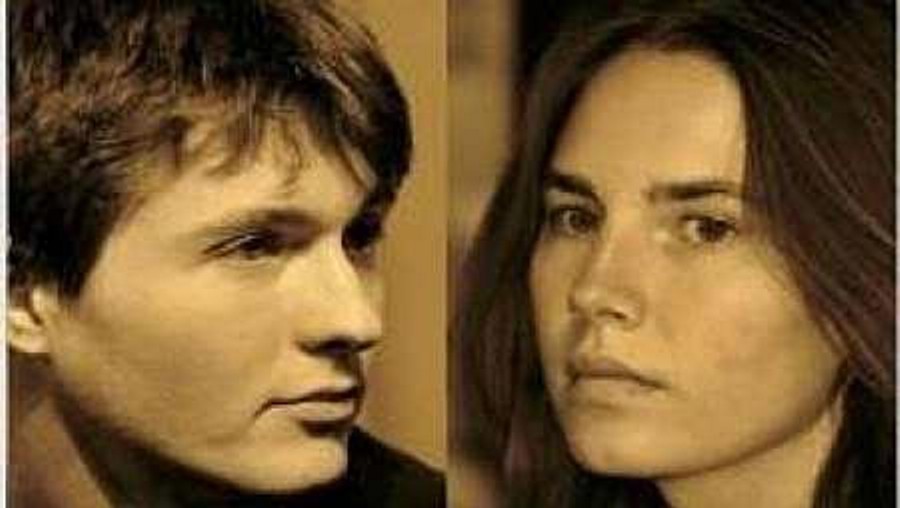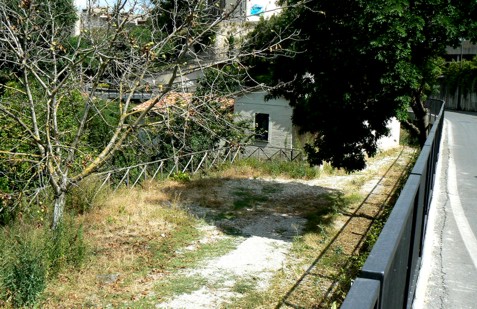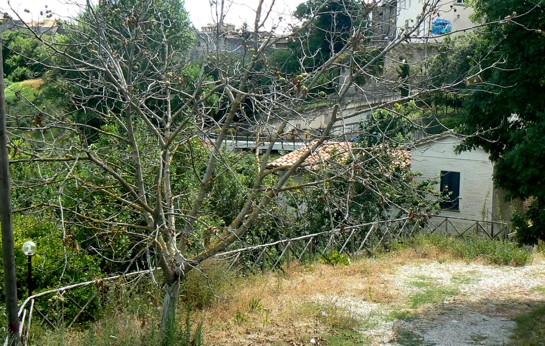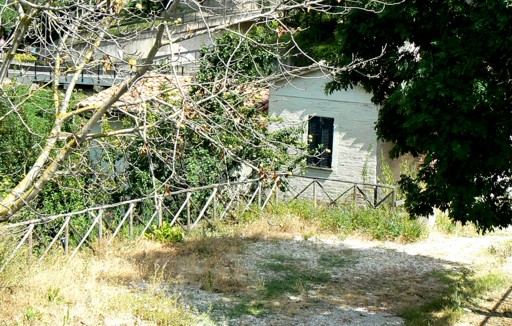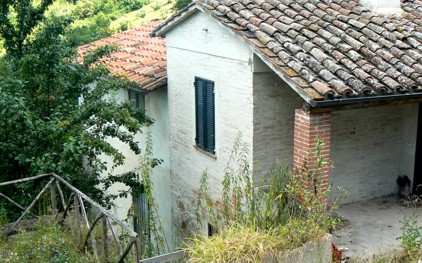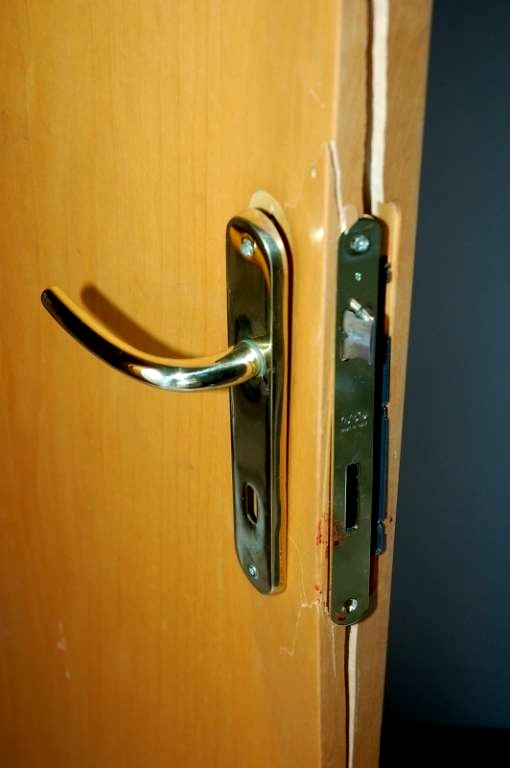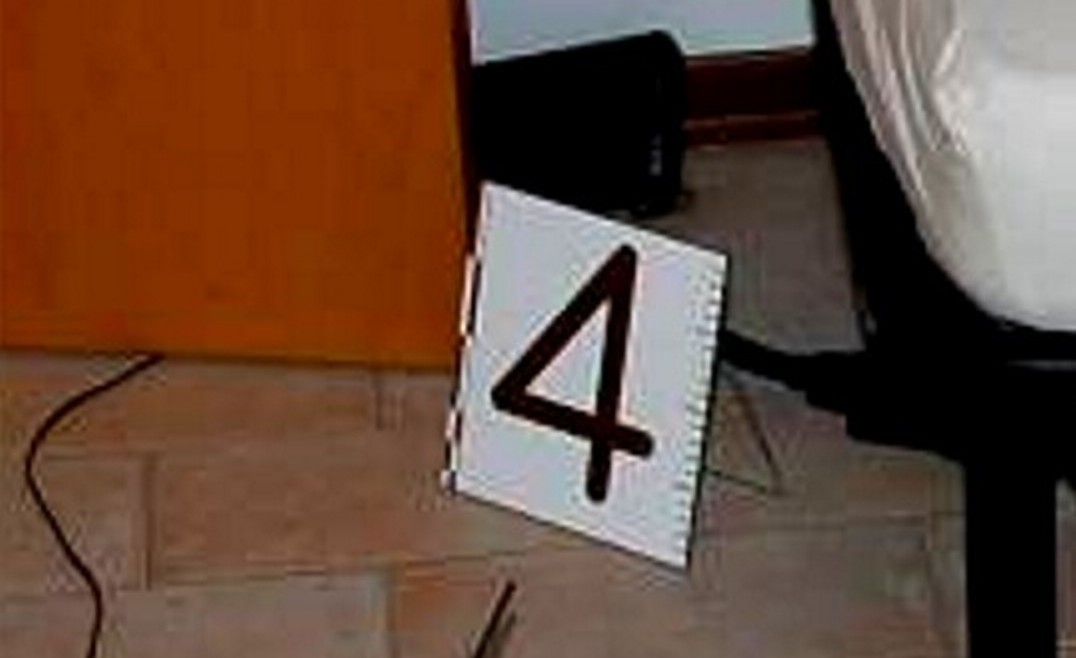
Category: Evidence & Witnesses
Tuesday, October 08, 2013
Questions For Knox and Sollecito: Why Claim Rudy Guede Did It Alone When So Much Proof Against?
Posted by Marcello
1. Problems Of Your “Guede did it alone” Mantra
Your attempts to frame Guede for the entire attack sound racist, and they fly in the face of a multitude of hard facts.
Why are you and your more untethered supporters arguing to the media that Rudy Guede alone attacked Meredith (he could not have), that he was a drifter (he wasnt), a burglar (he wasnt), and drug dealer (he wasnt), and that his DNA traces are “all over Meredith’s room” (they werent)?
There are surprisingly few DNA traces of Guede in there, and outside Meredith’s door there is only evidence of (1) his prior use of the south bathroom, and (2) his shoeprints headed straight for the front door.
There is zero evidence that Rudy Guede was ever in the shared bathroom (the one with Sollectio’s bloody footprint on the bathmat) and zero evidence he was in Filomena’s room (the one with the broken window and the mixed DNA of Meredith and Knox).
2. Evidence Against You Is Far, Far Stronger
Explain if you can about Sollecito’s bloody footprint. Explain if you can about the evidence of cleanup. Explain this and this about your multiple contradictory alibis.
Explain if you can why YOUR own witnesses Alessi and Aviello were such disasters for your side in court. Explain your cell phone actions (or non-actions) and the timing and content of your phone calls, and your computer actions (or non actions).
Explain why in Sollecito’s book he claims he sent several emails throughout the night; but there zero records of such emails with his email provider. Explain why both Sollecito and Knox framed Dr Mignini.
There are three compelling reasons above all why the Massei court and the Supreme Court will remain totally unbending on the point that Guede did NOT attack Meredith alone, and that it had to be a pack attack on Meredith.
- One is the full day of closed court testimony at trial by crime-scene experts from Rome who accounted for every point of evidence in Meredith’s room with a depiction of a 15 minute pack attack involving three people. This seriously upset the jury and your own defense was left essentially speechless.
- One is the prosecution’s video shown in closed court during Summations of the recreation of the attack on Meredith, which accounted for every point of evidence with a 15 minute pack attack involving three people. This seriously upset the jury and your own defense was left essentially speechless .
- One is that the entry of an attacker via Filomena’s room is so absolutely unbelievable. Your own defense always knew this, and barely tried to make that sale (hence the witnesses Alessi and Aviello).
There are seven other routes for a burglar to enter the house, all of them faster and quieter and five of them darker. You can see five in these images below: two via the east windows, three up onto the balcony and into the house via the louvre door or the kitchen window.
All seven routes would be obvious to any burglar, long before he walked all the way around the base of the house to beneath Filomena’s window (which he did several times in your scenario).
3. The Numerous Questions From Which You Hide
On or after 6 November you have both promised to appear in the appeal court in Florence. You are apparently too nervous to face cross-examination under oath, but you have said you intend to try to explain things.
- 1) Rudy Guede had been to the apartment at least twice already on prior occasions and knew the boys who lived in the lower story. Why did Guede choose to NOT break-in to the lower story where he knew (or could ascertain) that all four boys were away on holiday, and therefore could break-in and rummage with some certainty of not getting caught?
2) Why did Guede choose to break-in to the upper story of the villa mid-evening, when he surely knew Knox and Kercher would be staying at the villa for the holidays and could have been there or returned at any time to “catch him in-the-act”?
3) Surely Guede would have verified that no one was present by circling the cottage and checking if any lights were on in the windows? But Guede “missed” the really easy way in: the balcony in the dark at the rear, used in 2 burglaries in 2009.
4) If Guede did circle the cottage to make sure no one was there before attempting the break-in, why would he then choose the most visible and more difficult path of entry through a second story window, as opposed to the more hidden and easier path of break-in at the back of the villa, which he would have noticed while circling the villa?
5) Why would Guede choose to break-in through a second story window that was highly exposed to the headlights of passing cars on the street as well as exposed to night lighting from the carpark?
6) Ms. Romanelli testified that she had nearly closed the exterior shutters. Assuming her memory is correct, there is no way a burglar could easily verify if the windows were latched and if the inner scuri were latched to the window panes, which would make access to the window latch impractical unless one was armed with a core drill or an ax. Why would Guede, who was certainly familiar with such windows, choose to attempt the break-in through a window that he could not easily verify would allow him quick access?
7) Assuming the shutters were closed, Guede would have to climb up the wall and open the shutters before smashing the window with the rock. The night of the murder, the grass was wet from rain the previous day. Why was there no evidence of disturbed grass or mud on the walls?
8) Guede had Nike sneakers, not rock climbing shoes. How did he manage the climb up the wall with that type of footwear?
9) If the shutters were closed, or somewhat closed, how did Guede manage to lift himself up to the sill with only an inch of sill available to grab onto?
10) Assuming Guede opened the shutters, how did Guede verify if the inner scuri where not latched to the window panes, which would prevent access to the window latch? There was no light inside Ms. Romanelli’s room to reveal that the scuri were ajar.
11) Assuming Guede managed to check that the inner scuro behind the right-hand window was not latched, how did he manage to break the glass with a 9 lb rock with one hand while hanging on to the sill with the other?
12) Assuming Guede managed check that the right-hand inner scuro was not latched, how did he break the glass with the rock without having glass shards fly into his face?
13) If Guede climbed down to the lob the 9 lb rock at the window from 3 meters below, how would he do so to avoid glass shards raining down on him?
14) If Guede climbed down to the lob the rock at the window from below, why would he choose a 9 lb 20 cm wide rock to lob up to a window 3 meters above him, with little chance of striking the window in the correct fashion?
15) If Guede climbed down again and climbed back up to the carpark (up a steep slope with slippery wet grass and weeds) to lob the 9 lb 20 cm wide rock from the car park, why is there no evidence of this second climb down on the walls?
16) Why did Guede choose a 9 lb 20 cm wide rock to throw from the car park, given that a large, heavy rock would be difficult to lob with any precision? Especially considering that the width of the glass in the window pane is only 28 cm wide, surely anyone, experienced or not, would have chosen a smaller, lighter rock to throw with greater precision.
17) If Guede lobbed a 9 lb 20 cm rock from the car park, such a lob would require some velocity and therefore force. Guede would have been roughly 11-12 feet away from the window, in order for the lob to clear the wood railing at the carpark. If the rock was thrown with some velocity, why is the upper 1/2 of the glass in the window pane intact, without any fracture cracks at all?
18) If Guede lobbed a 9 lb 20 cm rock from the car park, such a lob would require some velocity and therefore force. Why is there so little damage to the scuro the rock hit, so little damage to the terrazzo flooring impacted by the rock, and so little damage to the rock itself, which surely would have fractured more on impact with a hard terrazzo floor?
19) Why was there no evidence of glass shards found in the grass below the window?
20) If Guede climbed the wall to open the shutters, climbed down and up to the car park to throw the rock, then climbed back down and up again to the window, how does he manage to hoist himself onto the sill without cutting himself on the glass that was found on the sill?
21) If Guede climbed the wall to open the shutters, hoisted himself onto the sill, tapped the glass with a 9 lb rock to lightly break the glass in a manner more consistent with how the window was broken, why did he throw the rock into the room, rather than let it fall into the grass below?
22) Why was no dirt, grass, muddy shoeprints or similar trace evidence found on the window sill?
23) Why was no dirt, grass, muddy shoeprints or similar trace evidence found in Romanelli’s room?
24) If Guede climbed the wall to open the shutters, climbed down and up to the car park to throw the rock, then climbed back down and up again to the window again, hoisted himself onto the sill without cutting himself on the glass that was found on the sill, unlatched the window and stepped inside Filomena’s room, how did he manage to get glass on top of Romanelli’s clothing that was found under the window sill?
25) Why would Guede, who would have spent a good 10 minutes trying to break and enter with the climbing up and down from the carpark, waste valuable time throwing clothes from the closet? Why not simply open the closet doors and rifle through the clothes without creating more of mess?
26) Why did he disregard Romanelli’s laptop, which was in plain view?
27) Why did Guede check the closet before checking the drawers of the nightstand, where surely more valuable objects like jewelry would be found?
28) Why were none of the other rooms disturbed during the break-in?
29) Assuming Ms. Kercher arrived to the cottage after Guede’s break-in, presumably when Guede was in the bathroom, why did she not notice the break-in, call the police and run out of the cottage?
30) Assuming Guede was in the bathroom when Ms. Kercher returned, why go to the extent of attacking Ms. Kercher in her room rather than try to sneak out the front door, or through the window he had just broken, to avoid if not identification, at least more serious criminal charges?
31) Assuming Ms. Kercher was at the cottage while Guede broke-in, why did she not call the police the moment she heard the rock crash through the glass, loudly thud to the terrazzo floor and investigate what was happening in Romanelli’s room while Guede was climbing back down from the car park and climbing back up to the window?
32) Assuming Ms. Kercher was at the cottage while Guede broke-in, Guede could have been on the sill already because he had tapped the glass with the 9 lb rock to break it. Therefore perhaps Guede was already partially inside Romanelli’s room when he was discovered by Ms. Kercher. In this case Guede follows Ms. Kercher to her room in an attempt to dissuade her from calling the police and the assault ensues. But then, if this scenario is correct, when does Guede have time to rifle through Romanelli’s clothing and effects?
33) Why is there a luminol revealed footprint in Romanelli’s room that has mixed traces of Knox’s and Kercher’s DNA ?
34) Why does this footprint not match Guede’s foot size?
35) If multiple attackers were required to restain Ms. Kercher, holding her limbs while brandishing two knives and committing sexual violence, then who else was with Guede and why no traces of this 4th (or more) person(s) were found, either in shoeprints, footprints, fingerprints, DNA or otherwise?
36) If Guede and others were involved in the assault, why has Guede not acknolwedged them, and instead consistently hinted that, and finally admitting that Sollecito and Knox were with him during the assault?
37) If Guede and others were involved in the assault, why do the other shoeprints, footprints, DNA traces and fingerprints all point to Knox and Sollecito being present during the assault, in one way or another?
4. Italy Is Not Buying The Racist Mantra
If your racist mantra remains “the black guy did it alone” and “Italians are corrupt and stupid” you need to PROVE that. If you cannot answer all of these questions above, this will deservedly cook you.
You could be facing 30 years with the “mitigating factors” canceled and the new penalties you will incur for your dishonest books and PR campaigns.
[Five easier ways in: 3 via balcony (note two drainpipes, window grid below), 2 via side windows]
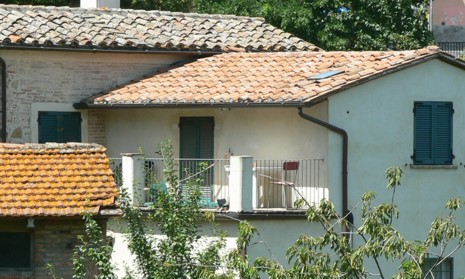
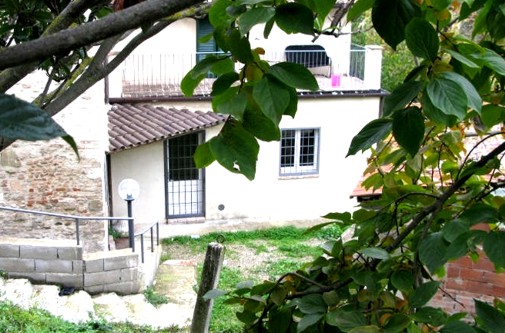
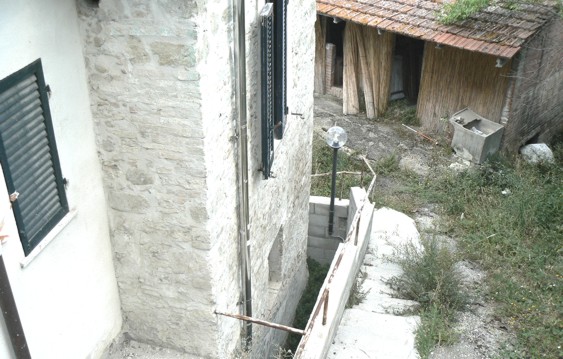
Wednesday, October 02, 2013
Appeal Session #1(B) Detailed Report On Enquiries The Court Has Okayed
Posted by Our Main Posters
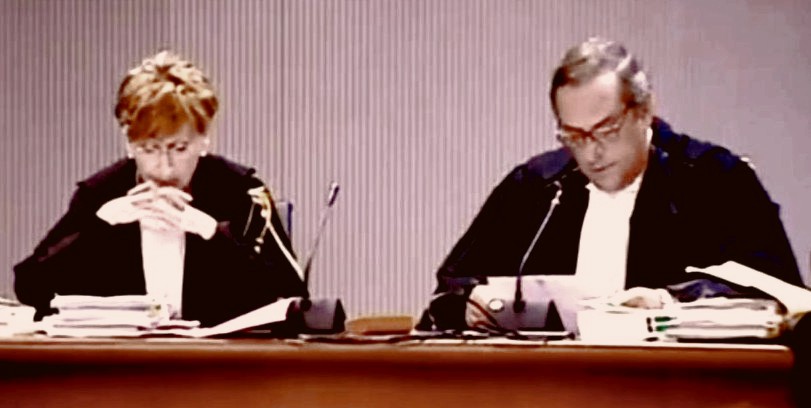
[Above the two co-judges with lead judge Allessandro Nencini reading the case history]
Explanation
The previous post listed what has already been agreed to by the court to guide the appeal. This report which only became available later describes what had been the prosecution and defense requests.
Translation From The Umbria24 website
Meredith, war of requests in the first hearing of the 2nd Appeal
The court has order a new test on the I trace and on the hearing of the witness Luciano Aviello. Rejected all other requests
By Francesca Marruco
After a little over 2 hours in counsel chambers the Florence Court of Appeals has decided to order a new test on the trace evidence of the knife seized in Raffaele Solecitto’s apartment, the weapon presumed to have been used in the murder.
The Court has also decided to hear the witness Luciano Aviello but rejected all the other requests for renewal of investigations presented by the defense. The Court resumes on Friday with Aviello and the assignment of the task of the new genetic analysis to the Carabinieri del Ris of Rome.
[The appeal] this morning in the maxi courtroom no. 32 of the Florence Justice Courthouse, commenced the new appeal for the murder of Meredith Kercher, after the annulment of the acquittal by the Supreme Court.
Present in the courtroom was only Patrick Lumumba. Absent, as expected, were the two appellants, Amanda Knox and Raffaele Sollecito.
- 9:00 Francesco Sollecito, father of Raffaele, says he is tranquil about the outcome of the new trial. Responding to journalists, he specified “The statement of the Supreme Court is compromised by errors committed because the judges did not have full access to all of the proceedings, as they themselves indicated.”
- 9:45 The defense of Knox and Sollecito have asked for the exclusion of the Patrick Lumumba (civil) party because the conviction of Amanda for calunnia has already been passed into final sentence.
This request was opposed by the General Prosecutor Alessandro Crini, and the lawyer of Lumumba. For them the plaintiff’s civil right is legitimate, as the Supreme Court has asked this court to re-evaluate the penalty in light of the finalized sentence of Knox.
The Court retired to counsel chambers to decide, announcing it wanted to decide today on any reopening of the investigation.
- 10:15 The court rejects the request of the defense of Knox and Sollecitto to exclude the civil party Patrick Lumumba, because the Court specifies that, among other things, the offense was not assessed in totality by the trial court.
- 10.50 The President of the Court of Appeals, Allessandro Nencini, is initiating his introductory report, starting from the day of Meredith’s homicide. The judge travels trough the most important passages of the three Courts. Speaking of the trace, secured by the consultants of the second [Hellman] Court, on the knife (considered the weapon of the crime by the first Court) President Nencini said: “It is necessary to underline that the independent consultants had found another trace; but it was not analyzed”.
- 11:15 The President of the Court, Judge Nencini, at the end of the introductory report, said: ” This is an appeal for matters of undeniable seriousness beyond the media spectacularization. Thus the Court is willing to give all possible space for debate to all of the parties, because originally there was a solid verdict, and the actions on which we proceed are of undeniable seriousness”
- 11.25 Raffaele Sollecito defense lawyer Giulia Buongiorno was the first to take the floor.
]Bongiorno:] Sollecito’s defense does not ignore the motivations of Cassazione, and we are in favor of any kind of verification that the Court will order, with the following caveats. This proceeding has always been based on two types of evidence, the testimonial and the technical. We request that during this proceeding, which we hope to be the last one, that the Court during the next hearings will concentrate only on the truly reliable evidences, putting aside those that are nullified by media conjecture.
Many witness have said things because they have read them or heard them. The proceeding was reopened, but not to collect this type of guesswork. We do not want to inflate this proceeding with new conjectures. We request to examine in depth the crime observed, as emphasized by Cassazione. In the crime scene room there are copious traces of two of the four claimed present persons, the victim and Rudy Guede who admitted to having been there, and none of the two appelants except on the hook of the victim’s bra.
When the Prosecutor asserts that there are no traces because Amanda and Raffaele cleaned them, we think that this is impossible. For this reason we request to have a evaluation done in order to verify if it is possible to clean selectively… A Cassazione mistake was that it didn’t notice the entry into the crime scene room before the bra hook was found, so we request the acquisition of two reports [on that].
We want to understand if in a sealed place it is possible to get firm evidence even after the admission by the police of other searches. We do not request to simply take the hook and to say that it is contaminated, we want to know if in that environment it was possible to collect some genuine evidence, because at the crime scene there were not ten traces of Raffaele but only that one”.
A subordinate request by Giulia Buongiorno is that experts, new experts or the ones at the Hellman appeal, will read the electropherograms. Buongiorno requests the analysis of both of Meredith Kercher’s cell phones that she consider the “black box” of the crime and that they “were never analyzed deep enough by the Corte d’Assise di Perugia” The defense requests also analysis of the presumed sperm trace on Meredith’s pillowcase.
- 12.15 Amanda Knox defense lawyer Carlo Della Vedova takes the floor and raises right away an exception to the judge’s stipulations. “Are we today able to judge on matters that happened six years ago? Can a person be under proceeding for life? Are we sure that Amanda Knox is an accused like all the others? Is it right, the indefinite delay of this proceeding? For all of this I insist that the Court evaluate the constitutionality.”
- 13.00 The Kercher family’s lawyer produced a letter written by the family members of Meredith that read “We are confident that the evidences will be reexamined and all the requests of more evidences will be granted, in a way that all the unanswered questions will be clarified and that the Court can decide on a future way of action in this tragic case. The past six years have been the most difficult of our lives and we want to find an end and remember Meredith as the girl that she really was rather than remember the horror associated with her”.
-14.00 The General Prosecutor Alessandro Crini says he is against the request of the defense to hear anew from some witnesses, including Rudy Hermann Guede. The same argument Crini voiced for the majority of the requests of the opening introduction presented by the defense. In conclusion, he asked for the the addition of the evaluation of the “I” trace, isolated by the independent experts, but never analyzed because they claimed it was believed to be Low Copy Number. Furthermore the prosecutor asks that the witness Aviello be reheard.
-15:00 The lawyers of the civil part that represent the Kercher family support the request of the General Prosecutor Crini, and opposed the requests of the defense. The lawyer Francesco Maresca said he believes that the defense attempts to frame with a new “dress” evidence that is strong, resistant, and robust, from the findings of the trial court, and that were minimized by the first appeal court. For example, the witness Capezzali.
Also there are newly framed certain requests that are obsolete, that have already been actioned. Like that of the selective cleaning. In the bathroom next to the room of the crime, there were many mixed traces of DNA of Amanda and the blood of Meredith. And the genetic profile of Sollecito, besides on the bra hook, was present only mixed with that of Amanda on a cigarette butt, then how did it migrate, only that one, from the cigarette butt to the bra hook?
- 15:10 The defense of Raffaele Sollecito maintains the request to analyze the “I” trace, but opposes hearing from the witness Luciano Aviello. Buongiorno also pointed out that it is not true that the independent experts of the second court decided automatically to not analyze certain traces, but did so in the presence of the prosecution experts Stefanoni and Novelli and those of the defense. Carlo Dalla Vedova, for the Knox defense, said that Avelio should be heard only to demonstrate that the police uses him two different ways. Like when Avelio said he knew where the crime weapon was.
- 15.30 The Court retired in council chamber and announced that will not come out before 17.30
Conclusion
Thereafter the court convened again and the decisions were as outlined in our post below this one. Almost all of what the defense had argued for - each of them a stretch if you know the full circumstances - was denied.
And the two main requests from the prosecution - that Aviello be put back on the stand, and the large knife be retested - were accepted. Ourcomes of these may or may not add to the strength of the prosecution’s case, but seem to offer no prospects of joy for the defenses.
Friday, September 27, 2013
Questions For Sollecito: Why So Many Contradictory Explanations Of How DNA Got On The Knife?
Posted by SomeAlibi
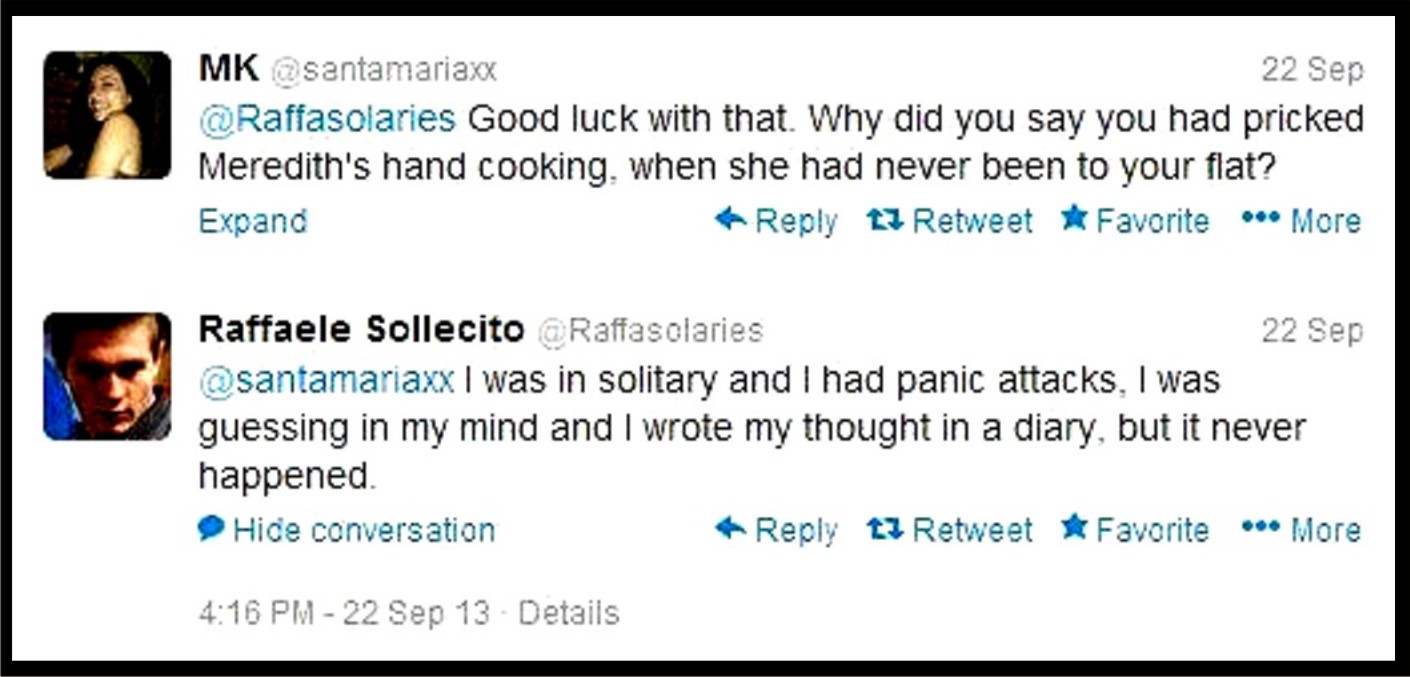
It is no secret (except seemingly to him) that Sollecito’s book and web postings will once again land him in court.
This trial will be separate from the main appeal though the prosecution office will be the same. It will be for alleged contempt of the court in serially mis-stating the evidence and accusing many officials of crimes in an attempt to get public opinion to lean heavily on the courts.
The Amanda Knox brigade has been trying that too, and look at how well that is working out!
Here is one seemingly perfect example of how Sollecito (finally responding to the pressures and pleas of his discombobulated lawyers?) may be trying to wind things back. You will recall that news of the discovery of a large knife in his kitchen drawer with Meredith’s DNA on it was related to Sollecito while he was in his prison cell, just over two weeks after the murder.
As much as the news initially panicked him, shortly thereafter on November 18th, 2007, he seemed relieved to have realised how Meredith’s DNA could have come to be on his kitchen knife after a session of, in his written words, “thinking and remembering”. He wrote in his diary:
The fact that there is Meredithʹs DNA on the kitchen knife is because on one occasion, while we were cooking together, I, while moving around at home {and} handling the knife, pricked her hand, and I apologized at once but she was not hurt {lei non si era fatta niente}. So the only real explanation for that kitchen knife is this one.
And that was it: Raffaele had “fortunately” remembered how he had “pricked” Meredith’s hand and that explained the DNA. He remembered it in precise detail - thank heavens for that!
The problem for Raffaele was that he didn’t know at this stage that the DNA was in a microscopic groove on the blade and not on the tip. The story made no sense. Worse, he was also flatly contradicted by the flatmates, the friends and even Amanda: he had never been cooking with Meredith and his story was therefore impossible as well as implausible. And since he was a murder suspect, the memories and all their specificity which would have given him an alibi for the DNA, became highly suspicious.
Unfortunately, Raffaele chose to remain silent thereafter and never testified, as was his right, at his trials.
Subsequently there were many months of Team Knox-Sollecito denying that Raffaele meant Meredith, in contradiction of all plain logic when reading the simple words in his diary. No, said the online apologists, in fact he meant Amanda’s hand and in some way he had thought that maybe Meredith’s DNA had been on Amanda and could have transferred. It wasn’t his fault that his theory was wrong, it was just an honest memory of being with Amanda and nothing suspicious at all.
On Twitter on September 22nd, Raffaele decided, probably unwittingly as is his wont, to blow that theory up. He was asked about the diary entry by Twitter user MK @santamariaxx and responded thus:
He replied as in the image above.
So, he didn’t really mean Amanda at all (thank-you for all the wasted hours of excuse making for Raffaele to those protagonists of that particular theory), but now we learn it was a false memory about Meredith that never happened.
But let’s unpick this because it’s far from a single mis-remembered sentence or action. This was a contemporaneous diary entry made barely two or three weeks after such a cooking event could have happened and it was a multi-faceted event with multiple actions. He was clear and precise about what happened in detail. Now, he is quite clear the whole thing never happened:
- 1. He said he was cooking together with Meredith - but that never happened
2. He recalled himself “moving about” during the cooking session - but that never happened
3. He remembered the location “at home” - but was never there in this context
4. He remembered putting a knife that he was holding into / onto Meredith’s hand - but that never happened
5. He remembered actively apologizing to Meredith for that clumsy act - but that never happened
6. He remembered the act of them examining Meredith’s hand and mutually discovering that she had not been hurt - but that never happened
7. He remembered that this was the real explanation of the kitchen knife - but it never happened
Sollecito was on his own in a cell, not under interrogation, and spending time “thinking and remembering” on November 18th. What he remembered, in detail, was a multi-part sequence of events with a girl who had been murdered barely two weeks before. He remembered the minutiae of what happened and its sequence when he believed he needed to provide an alibi for the identification of the DNA on his knife.
None of Amanda Knox’s vagueness about these memories - they were particular and specific in the finest detail. So fine and specific that when he was caught out that this could not have happened, those details looked highly like someone seeking to convince precisely because of the particularity of the details. It was in the time-honoured form: “no, no - it definitely happened, because I specifically remember”..... 7 distinct and separate memories and the sequence in which they occured.
But all those things never happened according to Raffaele Sollecito in 2013.
Knox and Sollecito have never stopped the self-serving lies and flat contradictions of themselves. Not now, even after all this time, even after one them is permanently stained as, at a minimum, a convicted liar who criminally tried to frame a man for murder. Sollecito, “not hiding” in his secret location, can’t stop either. Little good it will do either of them. Finally, justice is coming and the lies will be at end. I’d almost feel sorry for him, if he wasn’t then and remains now, an inveterate liar without the honour to face justice in the country of his birth.
Sunday, September 22, 2013
Questions For Knox: Ten Hard Questions That Knox Should Be Asked Monday On ITV’s Daybreak
Posted by The Machine
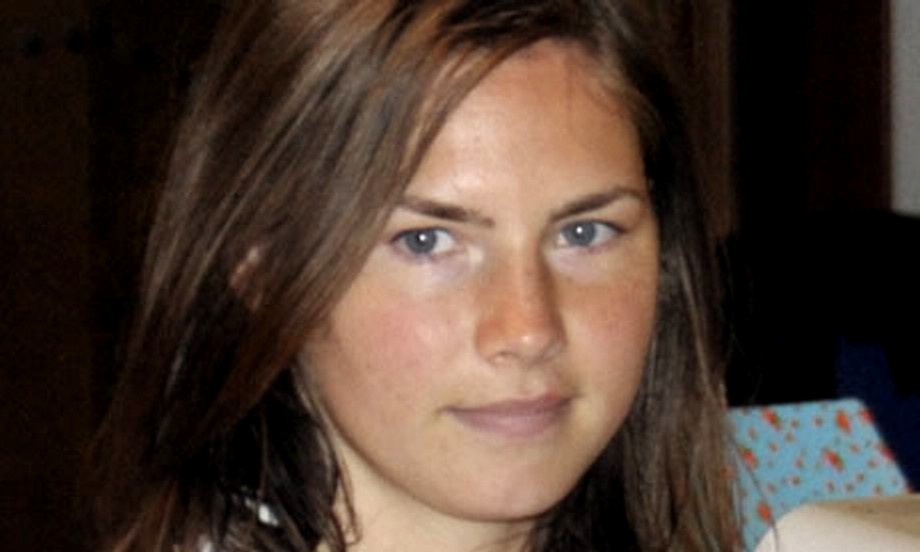
Amanda Knox will be interviewed for the first time in Britain on ITV’s Daybreak programme tomorrow.
No interviewer should unquestioningly accept everything Knox says as the gospel truth. Remember Knox served three years in prison and is labeled a convicted felon for life for malicious lying.
So let’s hope tomorrow’s interview is not yet another whiny mis-statement of the core facts, and not yet more sliming of Italian officials, of which we have just seen so many.
There are many questions on this site which Knox has never ever answered. Some arise from the evidence and some from her dishonest book.
See especially the tough questions here and here and here and here. With luck the Daybreak hosts will ask Knox all of these tough questions below.
1. Multiple false alibis
You and Raffaele Sollecito gave completely different accounts of where you were, who you were with and what you were doing on the night of the murder. Neither of you have credible alibis despite three attempts each. Sollecito told Kate Mansey from The Sunday Mirror that you and him were at a party.
He told the police that you and him were at his apartment. He then told them that he was home alone and that you weren’t at his apartment from around 9.00pm to about 1.00am. You first told the police that you were at Sollecito’s apartment. After you were informed that he was no longer providing you with an alibi, you repeatedly claimed that you went to the cottage with Diya Lumumba.
You changed your story yet again and claimed that you were at Sollecito’s apartment, but he might have gone out. All the other people who were questioned had one credible alibi that could be verified.
Extract of Sollecito’s witness statement.
“I went home, smoked a joint, and had dinner, but I don’t remember what I ate. At around eleven my father phoned me on the house phone. I remember Amanda wasn’t back yet. I surfed on the Internet for a couple of hours after my father’s phone call and I stopped only when Amanda came back, about one in the morning I think.
Question 1. Why did you and Raffaele Sollecito repeatedly tell the police and others a pack of lies?
2. False accusation
You falsely claimed that Diya Lumumba killed Meredith in two witness statements and you repeated the false accusation in your handwritten note to the police on 6 November 2007. You served three years in prison for this felony and your appeal to the Supreme Court was denied.
Question 2. Why did you repeatedly accuse Diya Lumumba of murder when you knew full well that he was completely innocent and why didn’t you or your mother retract your accusation when he was in prison?
3. The Double DNA Knife
According to a number of independent forensic experts - Dr. Patrizia Stefanoni, Dr. Renato Biondo, Professor, Giuesppe Novelli, Professor Francesca Torricelli, Luciano Garofano, Elizabeth Johnson and Greg Hampikian - Meredith’s Kercher’s DNA was found on the blade of a knife from Raffaele Sollecito’s kitchen.
He falsely claimed in his prison diary that he had accidentally pricked Meredith’s hand whilst cooking. Dr Stefanoni analysed the traces on the knife six days after last handling Meredith’s DNA. This means that contamination couldn’t have occurred in the laboratory.
Meredith had never been to Sollecito’s apartment, so contamination away from the laboratory was impossible.
Question 3. How do you think Meredith’s DNA got onto the blade of the kitchen knife?
4. The bra clasp
An abundant amount of Raffaele Sollecito’s DNA was found on Meredith’s on the exact part of Meredith bra clasp that was bent out of shape during the attack on her. His DNA was identified by two separate DNA tests. Of the 17 loci tested in the sample, Sollecito’s profile matched 17 out of 17. Professor Torricelli testified that it was unlikely the clasp was contaminated because there was a significant amount of Sollecito’s DNA on it.
Professor Novelli analysed the series of samples from all 255 items processed and found not a single instance of contamination, and ruled out as implausible that a contaminating agent could have been present just on one single result. David Balding, a Professor of Statistical Genetics at University College London, recently analysed the DNA evidence against Sollecito and concluded it was strong.
Question 4. How do you think Raffaele Sollecito’s DNA ended up on Meredith’s bra clasp?
5. The bloody footprint on the bathmat
According to two imprint experts - Rinaldi and Boemi - the bloody footprint on the blue bathmat in the bathroom matched the characteristics of Sollecito’s foot, but couldn’t possibly belong to Guede. Rudy Guede’s bloody footprints led straight out of Meredith’s room and out of the house which indicates that he didn’t go into the bathroom after Meredith had been stabbed.
See our past posts on this here and here.
Question 5. Who do you think left the bloody footprint on the bathmat?
6. Mixed samples of Amanda Knox’s DNA or blood and Meredith Kercher’s blood
According to the prosecution’s experts, there were five instances of your DNA or blood mixed with Meredith’s blood in three different locations in the cottage. Even your lawyers conceded that your blood had mingled with Meredith’s blood. In other words, Meredith and Amanda Knox were both bleeding at the same time.
Question 6. Why were you bleeding on the night of the murder and is it a coincidence that only your DNA was found mixed with Meredith’s blood?
7. The Luminol Enhanced Footprints
Bare bloody footprints were revealed by Luminol at the cottage. Three of them are compatible with your foot size and one of them is compatible with Raffaele Sollecito’s foot size.
Question 7. What do you think the Luminol was reacting to - Meredith’s blood or some other substance?
8. The staged break-in
There is absolutely no evidence that anyone stood outside Filomena’s window and climbed up the vertical wall on the night of the murder. There were no marks from soil, grass or rubber soles on the wall. The earth of the evening of 1 November 2007 was very wet, so if anybody had climbed the wall, they would have left some marks on it.
The glass on the window sill and on the floor show no signs of being touched after the window was broken, which would have been the case if the intruder had gained entry through the window.
There was not a single biological trace on any of the shards of glass. It would have been very likely that an intruder balancing on the window sill would have suffered some kind of injury or cut because of the shards of glass.
If the window had been broken from the outside, there would have been shards of glass outside, but there wasn’t even one.
Judge Massei and the panel of judges at the Italian Supreme Court specifically mentioned the shards of glass on top of Filomena’s clothes which had been tossed onto the floor in her room and regarded it as proof that the break-in was staged.
Question 8. Who do you think staged the break-in at the cottage?
9. Knowledge of the crime
Umbria Procurator General Galati’s pointed out in his appeal that you knew specific details of the crime that you could have only known if you had been present when Meredith was killed.
According to multiple witnesses at the police station, you said you were the one who had found Meredith’s body, that she was in the wardrobe, that she was covered by the quilt, that a foot was sticking out, that they had cut her throat and that there was blood everywhere. But you weren’t in a position to have seen anything at all when the door was kicked in.
In your witness statement you described Meredith’s scream. Other witnesses have corroborated your claim that there was a loud scream.
Question 9. How did you know so many precise details of the crime?
10. Shower and the “bathmat shuffle”
The Scientific Police found 13 traces of blood in the bathroom that Meredith and you shared. Prosecutor Mignini and Filomena have both expressed their surprise that you showered in a blood-spattered bathroom.
Filomena told Mignini during cross-examination: “I thought it was odd that she’d had a shower when there was blood all over the place.”
You told Mignini that you used the bathmat to shuffle to your room.
Question 10. Why did you shower in a bathroom that was splattered with blood, and did you notice the visible bloody footprint on the bathmat when you used it to shuffle to your room? And why so soon after did the police notice that you were stinking?
Lorraine Kelly and Aled Jones the ITV Daybreak hosts who should confront Amanda Knox

Friday, September 13, 2013
Lead Judge Is Now Confirmed And Court Dates Announced For The Florence Appeal
Posted by Peter Quennell
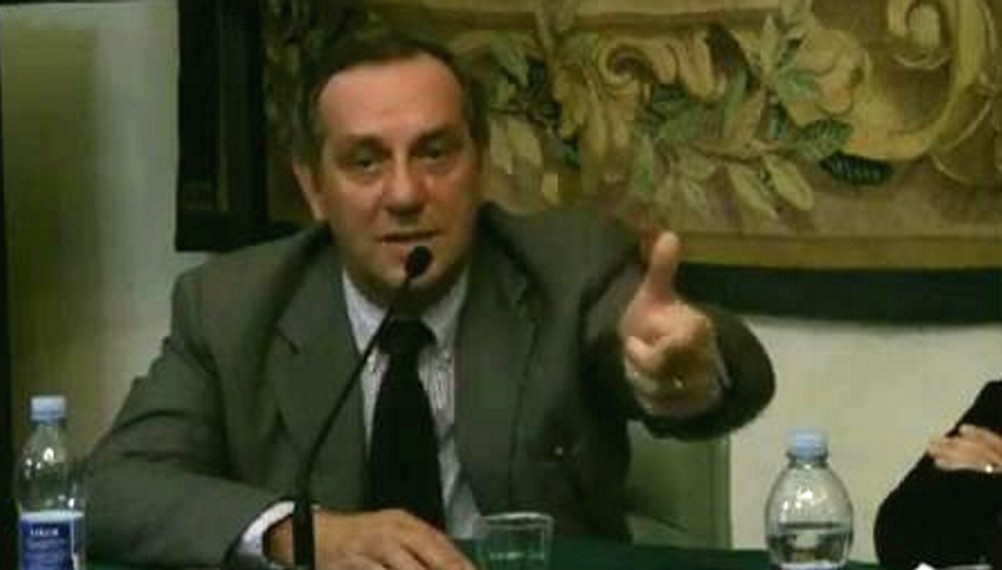
Above: the formidable senior appeal judge Dr Alessandro Nencini who will preside over the appeal.]
September 30; October 4, 23, 24; and November 6, 7, 25, and 26.
These are the dates the Florence appeal court will meet. Corriere and other Italian media sites are confirming these as the dates.
It is confirmed that Judge Alessandro Nencini will preside over the appeal in the Palace of Justice’s Courtroom 32. He is a very senior judge. As the ANSA News Service mentions, Judge Nencini is the President of the Second Chamber of Appeal of the Florence Court.
The new Prosecutor General of Tuscany (Florence’s region) Dr Tindari Baglione, the chief prosecutor of Tuscany’s appeal court, is selecting the prosecutors for the appeal. He arrived in Florence in May of this year. He is said to be formidably unbending. He recently imposed tough sentences on 27 people for the environmental damage caused by illegal work in Mugello on the high speed rail link between Florence and Bologna.
Already appointed as the lead prosecutor is Dr Alessandro Crini. He was among the Florence prosecutors who handled the investigation into the murders by the Monster of Florence and also the mafia massacres of 1993. In the Monster of Florence case he was a deputy to the leading prosecutor Dr Paolo Canessa, the main prosecutor of the last and final MoF trials.
There are at least seven pieces of bad news for the hotheaded among the Knox-Sollecito faction coming down the pike, some already mentioned in this recent post here..
- 1) Prosecutors Paolo Canessa and Alessandro Crimi carried out their MoF investigations in cooperation with Prosecutor Giuliano Mignini of Perugia. We believe it was they who first involved Dr Mignini in the MoF case by explaining the possible MoF connection with the Narducci murder Dr Mignini was investigating. Dr Mignini has no role in this appeal, but they had obvious confidence in him..
2) Giulia Bongiorno may be leaving the Sollecito team. Sollecito himself has done an immense amount to embarrass her with his defamatory book and narcissistic TV claims. The new lawyer Dr Mastro is said to be a relative of the Sollecito family and has been harshly critical of the Bongiorno defense line of joining Sollecito to Knox at the hip. He would presumably separate Sollecito from Knox, and may throw Knox to the wolves if it helps.
3) The trial of Luciano Aviello will be running in Florence during the same time as the appeal. Each could explosively impact the other. We explained the extraordinary implications of this trial for the Knox and Sollecito entourages in this past post also linked to just above.
4) The trial of Frank Sforza for criminal defamation will start in Florence on 6 November. A prosecutor will bring this case, it is not a simple calunnia case brought by those Sforza abused. We have a new post pending which will explain the many nasty implications for the FOA. Its testimony could also spill over into the Knox-Sollecito appeal.
5) The appeal outcome is expected to be arrived at by the latest in December. Knox and Sollecito wont have to wait long to hear the probable outcome: guilty as charged. Whether either will appear in the court seems doubtful, but a no-show will do them no good. A coward’s move.
6) The chief prosecutor in Florence is expected to announce any time now what charges will be brought against Raffaelle Sollecito and his publishers for the many false accusation of crimes and malicious mis-statements of evidence he foolishly included in his book. At least one could incur a substantial prison sentence: Sollecito’s false accusation that the prosecution sought a deal whereby he would turn on Amanda Knox in exchange for lesser charges.
7) The chief prosecutor in Bergamo north of Milan is expected to announce any time now what charges will be brought against Amanda Knox and her publishers and Oggi for the many false accusation of crimes and malicious mis-statements of evidence she foolishly included in her book. At least one all by itself could incur a prison sentence: Knox’s false accusation that the prosecution forced her in an illegal interrogation into framing Patrick Lumumba.
Those who appear to us realistic about the minefield they face include the defense lawyers (who are rumored to be very despondent) and those who have detached themselves from the pro-Knox forces and quite possibly Curt Knox himself who of late has been quiet for sure.
Those who still maintain a crazed and abusive hard line appear to be only Bruce Fischer and the Mellas family including Chris, Edda, and close relatives. Fischer seems to us unlikely to grow a brain before he is dragged to court, but it is possible that the Mellas family might. They have taken down all traces of one of the many defaming websites Chris Mellas is known to have put up, the final Perugia Shock.
Also when he overstayed his welcome at their house they threw Frank Sforza out.
[Central Florence at night with Palace Of Justice faintly visible behind at left-center; click to enlarge]

Thursday, September 05, 2013
Questions For Knox: Why So Many False Claims In Accounts Of Your Visit To The House?
Posted by James Raper
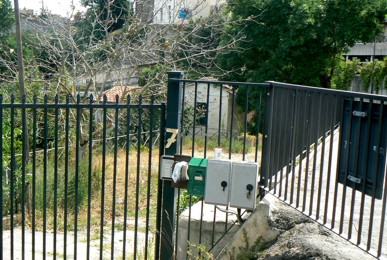
[Filomena’s shutters on approach above and below NOT half-open as they were when Knox arrived]
Additional to this post and this post on the overwhelming strength of the evidence against Sollecito and Knox.
Amanda Knox was of course lying from the start about her initial visit to the cottage to have a shower and collect a change of clothing, in the account which she gave the police when they turned up, and which she then embellished into a version of Little Red Riding Hood in her e-mail.
Here’s how we can know why. One of her most glaringly untrue claims, one not hard to fathom out and indeed I have no doubt that she had done so herself and regretted it within minutes of recounting her story to the police.
The shutters to Filomena’s window were open upon the arrival of the postal police. Massei (page 27) -
Said window had two half-closed shutters, and the right-hand shutter (the right with respect to the person looking at it) was slightly more open”› (page 62, hearing of February 6, 2009, Battistelli’s statements).
Filomena’s window is in fact the most prominent feature of the cottage for anyone walking down the lane to it. Yet, incredibly, if we are to make sense of the rest of her account, we are required to believe that Knox did not notice the shutters .
Whether they were half open or less than half open does not matter. They were open, indicating, as a matter of common sense, that the occupant of the room might be somewhere around.
You would think that anyone (anyone but Knox apparently) apprised of this elementary scrap of information about their own home and flatmates, and then in addition finding that the front door was open and no-one was answering, would have checked the other rooms, and in particular Filomena’s, out of curiosity if not concern, wouldn’t you? Of course you would.
Discovery of the broken window would then, if not before, have been inevitable, but of course in those circumstances no one would have believed that she had then had a shower and blow dried her hair.
Of course it did occur to the police that her story was a load of nonsense, just as it did to Knox and Sollecito.
See at bottom here for the famous picture of Knox and Sollecito together outside the cottage, Knox with her left hand up to her eyes and Sollecito by her side standing with his back to the window, jaws clenched and staring blankly straight ahead.
They knew, and they must have been praying hard that the police were just as stupid as them. When they were not arrested on the spot they must have thought their prayers were answered.
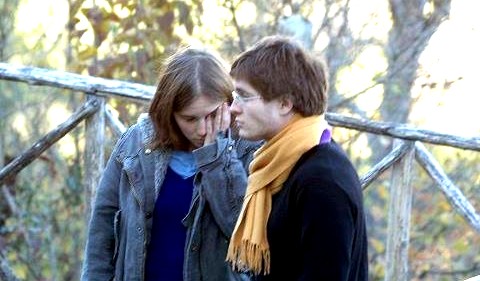
[Shower? Knox with Sollecito several hours later at which point her body odour was reported as immense]
Saturday, August 24, 2013
Desperate Ghirga Urges Amanda Knox To Show At Florence Appeal, But She’s Created More Problems
Posted by Peter Quennell
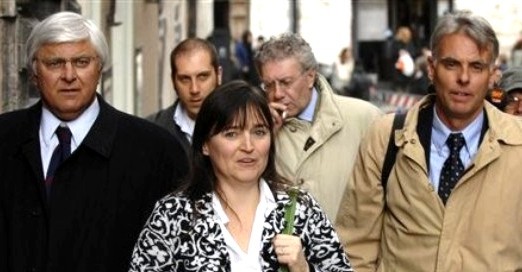
[Above: Knox’s legal team with mom back when; even then it looked like they could use some sleep]
Overview
Meeting in Seattle, Amanda Knox’S lawyer urges her to be at the Florence appeal, but his suggestion falls on deaf ears.
Here is a brief report from Italy. Clearly her lead defense lawyer Ghirga (who normally handles only small-time crime) thinks the presence of Knox and her entourage coould humanize her and allow her to speak out and to guide him.
But Knox has really been burning her bridges to Italy big-time. Let us list some of the ways in which they are now foolishly dug in so deep.
Further Law-Breaking
Since the end of trial in 2009 Amanda Knox’s entourage and she herself appear to have broken law after law after law, issuing new smears, harassing the victim’s family, having her book taken to court in Bergamo.
In Florence, how does she talk about that?
Evidence Could Strengthen
The evidence in the case as presented at trial in 2009 remains rock solid to this day (the Massei outcome is the state of play) and if the large knife is retested, it could actually get way worse. Hundreds of open questions remain which Knox has strenuously avoided answering, either on the stand or in her book or on TV.
In Florence, how does she talk about that?
Calunnias Of Justice Officials
Every instance where Amanda Knox and any of her entourage alleged without hard proof that Italian police and prosecutors have committed crimes (and there have been literally hundreds of such accusations by Preston, Fischer, on and on, now all captured and preserved) could see any or all of them hauled into court with zero heads-up (ask Sforza).
In Florence, how does she talk about that?
Framing Of Dr Mignini
In 2011 Knox was sentenced to three years (served) for the crime of framing Patrick Lumumba. So what does this slow learner do? Turn right around and commit the SAME crime in her nasty book, only this time she makes it worse. This time, she frames the chief prosecutor, in describing in detail a highly illegal interrogation that never took place.
In Florence, how does she talk about that?
Threat Of Conspiracists
There are perhaps 40 felony allegations against police and prosecution in Sollecito’s blood-money book and maybe another 20 in Knox’s own. Each of them will be put on trial separately for those claims and either one of them or both in desperation could take down all the writers, all the agents, all the publishers, all the wild-eyed conspiracists who helped write the books, and all those who made the illegal multi-million dollar deals, including their own two dads.
In Florence, how does she talk about that?
Threat Of Frank Sforza On Trial
The contempt of court trial of Frank Sforza is about to start. He is desperate to stay out of jail, and all of his alleged felonies since 2008 in contempt of the court could put him there for up to ten years. Consider the list of precisely who in Italy and the US Frank Sforza might take down, to try to give himself something of a break. This list is nothing if not long (see next post).
In Florence, how does she talk about that?
Threat Of Hellmann And Aviello
Witness Luciano Aviello is now on trial and as this post explained Aviello could take down all of the defense lawyers (for illegal dealing over the “right” judge), all of the Sollecitos, if they offered bribes, and both of the judges, Hellmann and Zanetti, who presided over the annulled appeal.
In Florence, how does she talk about that?
Conclusion
Nobody with any sense flouts the Supreme Court, or the extremely important, powerful court in Florence, which has sent down some of the toughest perps in the land.
Both courts and both prosecution teams are well-know in Italy for being cold and relentless in their search for the truth. None of the four lead lawyers for Sollecito and Knox has ever won even one case either in Florence or before the Supreme Court.
This might well be a trial balloon, to see how the Florence prosecutors and courts react. An arrest warrant, maybe? As we have seen lately, they act fast, and suddenly at any time.
Monday, August 05, 2013
A New DNA Analysis Strongly Implicating Sollecito Seems to Have The Defense Forces Rattled
Posted by The Machine
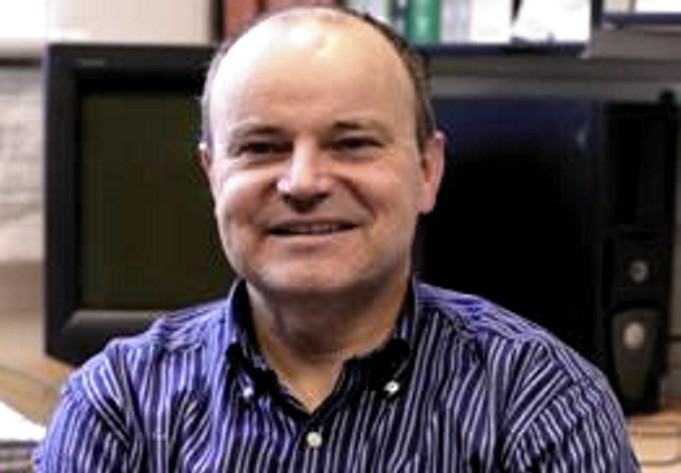 F
F
[Above: DNA professional Professor David Balding; at bottom, DNA amateurs Barras and Halkides]
The Supreme Court has already shown strong disdain for the myriad dirty tricks of the defense forces, and legal action is building against them (see our post next week).
That the defense forces in this context attempt to put out even more misleading information seems a sure sign that their backs are to the wall, and that they will risk anything to again tilt the playing field.
Colin Barras
“Software says Amanda Knox’s DNA wasn’t at crime scene” This highly misleading header appeared above an article by Colin Barras on the New Scientist website last month.
It should be pointed out that Colin Barras isn’t a DNA expert. He has never been involved in a forensic investigation. He has never provided expert testimony in a court case. He is simply a freelance British science writer with degrees in geology, palaeobiology and palaentology - the palaentology of Jurassic sea urchins.
Barras explains in his article that Professor David Balding, a Professor of Statistical Genetics at University College London, has developed new software for interpreting Low Template DNA evidence.
This is true. However, Barras then goes on to make the following claim:
Using the software on data from Knox’s trial suggests that it was very unlikely that her DNA was at the crime scene.
In fact Professor Balding and his software suggested nothing of the sort. Professor Balding was referring specifically to an incomplete DNA profile on Meredith Kercher’s bra clasp which has never been at much issue.
He did not refer to all the other DNA evidence that was collected at the crime scene and presented as evidence in court.
It’s important to clarify what this crime scene actually is, because the defense forces of Amanda Knox and Raffaele Sollecito constantly move the goalposts in relation to this case depending on who they are talking about.
When they talk about the evidence against Knox and Sollecito, their version of the crime scene is strictly limited to Meredith’s room. When they discuss the evidence against Guede, their version of the crime scene includes other rooms in the cottage i.e. the other bathroom and the hallway. And when they discuss the collection of the DNA evidence, their version of the crime scene suddenly includes the flat downstairs, even though no crime was committed there.
According to Wikipedia “A crime scene is a location where a crime took place (or another location where evidence of the crime may be found), and comprises the area from which most of the physical evidence is retrieved by law enforcement personnel, crime scene investigators (CSIs) or in rare circumstances, forensic scientists.”
The Scientific Police from Rome and the Forensic Police from Perugia clearly regarded most of the cottage as a crime scene. The Forensic Police from Perugia catalogued potential evidence by placing letters and numbers in different rooms in the cottage. (The Massei report, p200).
The Scientific Police then collected DNA and forensic evidence from Meredith’s room, Amanda Knox’s room, the hallway, the kitchen, the blood-spattered bathroom, the other bathroom which was used by Filomena and Laura and Filomena’s room where the break-in was allegedly staged. That’s a total of seven rooms.
And the Scientific Police didn’t actually claim at the trial that the incomplete profile on the bra clasp belonged to Amanda Knox. It was Sollecito’s forensic expert Professor Vinci who claimed that Knox’s DNA was on Meredith’s bra. His findings were presented in court at Rudy Guede’s fast-track trial in 2008.
So Colin Barras has used a straw-man argument. He has completely ignored the six pieces of DNA evidence that place Amanda Knox at the crime scene on the night of the murder.
According to the prosecution’s experts, Amanda Knox’s blood was found mingled with Meredith’s blood in three places in the bathroom: on the ledge of the basin, on the bidet, and on a box of Q Tips cotton swabs.
Knox’s DNA and Meredith’s DNA was also found mixed together in a bare bloody footprint which was revealed by Luminol in the hallway and a mixture of Knox’s DNA and Meredith’s blood was also found on the floor in Filomena’s room.
Amanda Knox’s DNA was found on the handle of Sollecito’s kitchen knife and a number of forensic experts - Dr. Patrizia Stefanoni, Dr. Renato Biondo, Professor Giuesppe Novelli, Professor Francesca Torricelli, Luciano Garofano, Greg Hampikian and Elizabeth Johnson - have all confirmed that Meredith’s DNA was on the blade.
Dr Stefanoni analysed the traces on the knife six days after last handling Meredith’s DNA. This means that contamination couldn’t have occurred in the laboratory. Meredith had never been to Sollecito’s apartment, so contamination away from the laboratory was impossible.
The knife is still in evidence and remains compelling evidence against Knox and Sollecito.
Ominously for Knox and Sollecito, the Supreme Court explained how DNA evidence should be assessed in court i.e. contamination must be proven with certainty not supposition.
The burden of proof is on the person who asserts contamination, not the person who denies it.
In other words, if the defence lawyers claim the DNA evidence was contaminated, they must describe the specific place and time where it could have plausibly occurred.
Nobody has ever proved that the bra clasp and knife evidence were contaminated and it’s difficult to see how the defence lawyers’s experts are going to do this at the new appeal.
Chris Halkides
Chris Halkides is one of Amanda Knox’s most effusive supporters. He has pontificated extensively about the case on his blog View from Wilimington and on other Internet websites.
On 30 July, he was finally prompted to post an interview with Professor Balding done some months previously. I suspect Halkides had been very keen to interview Professor Balding after reading Colin Barras’ article on the New Scientist website; but was holding back on posting it because it went against his own claims.
Indeed, his interview has turned out to be quite a slap in the face for the Friends of Amanda and Colin Barras, because Professor Balding categorically described the DNA evidence against Sollecito to Halkidis as “strong”.
It’s worth summarising Professor Balding’s impressive academic record which for this case is topnotch, perhaps the best .
He is currently the Chair of Statistical Genetics at University College in London. He has a first-class honours degree and a PhD in Mathematics. And he has written many journal articles and co-authored a number of books on a range of topics.
This is apparently the whole of Chris Halkides’ interview with Professor Balding:
TUESDAY, JULY 30, 2013
An interview with David Balding
Part 36 in the Knox/Sollecito case
Professor David Balding recently published an analysis of the bra clasp DNA. It may be helpful to explain some terms found in this article. John Butler (Fundamentals of Forensic DNA Typing) defines the likelihood ratio (LR) as “The ratio of the probabilities of the same event under different hypotheses, and he explains that the prosecution’s hypothesis is usually the numerator, and the defense’s hypothesis is usually the denominator. A ban is a unit of expressing the weight of evidence (WoE). This scale is logarithmic; a likelihood ratio of three bans is equal to one thousand. Some months ago Dr. Balding was kind enough to answer some of my questions about this work.
Does Raffaele Sollecito¹s DNA fall into the category of low template DNA, and if so, should two separate amplifications have been run?
There’s no strict definition of “low-template” but broadly yes the peaks associated with Sollecito are low (but not those associated with Kercher, they are high). Conti-Vecchiotti discuss a threshold of 50 rfu below which a peak should not be relied on; in the UK, that threshold was used in the past but nowadays as techniques have improved the threshold is often lower, 25 or 30.
However that doesn’t matter here as all the peaks associated with Sollecito are well above 50: there is a 65, a 70 and a 98, all the 26 other peaks are above 100. So it is not extremely low template - many low-template cases are successfully prosecuted in the UK even when some peaks fall below the threshold and so are discounted. In this case all the peaks associated with Sollecito seem clear and distinct so I think there can be no concern about the quality of the result as far as it concerns him or Kercher.
Replication is generally a good thing and is nowadays done in most cases in my experience, but not all - one problem is that replication splits the sample and so can increase the chance of not getting a usable result. But although replication is desirable it is not essential. (In a sense there already is replication, because each of the 15 loci is an independent test.)
This is all a matter of weight of evidence, which Conti-Vecchiotti paid no attention to: if you measure the weight of evidence properly, that accounts for the extra assurance that comes from replication and gives a stronger result (or conversely gives a weaker result if there is not replication). But because Sollecito is fully represented in the stain at 15 loci (we still only use 10 in the UK, so 15 is a lot), the evidence against him is strong even allowing for the additional uncertainty due to non-replication.
Are there contributors other than Raffaele Sollecito and Meredith Kercher to the autosomal profiles? If so, how does the presence of this additional DNA affect the bra clasp as evidence?
Yes, Conti-Vecchiotti identified a further 12 above-threshold peaks at alleles that could not have come from Sollecito or Kercher. They correctly criticised the scientific police for ignoring these: many do appear to be stutter peaks which are usually ignored, but 4 are not and definitely indicate DNA from another individual. The extra peaks are all low, so the extra individuals contributed very little DNA. That kind of extraneous DNA is routine in low-template work: our environment is covered with DNA from breath and touch, including a lot of fragmentary DNA from degraded cells that can show up in low-template analyses.
There is virtually no crime sample that doesn’t have some environmental DNA on it, from individuals not directly involved in the crime. This does create additional uncertainty in the analysis because of the extra ambiguity about the true profile of the contributor of interest, but as long as it is correctly allowed for in the analysis there is no problem - it is completely routine.
Are there contributors to the Y-STR profile other than Raffaele Sollecito? If so, how does the presence of this DNA affect our interpretation of the bra clasp as evidence?
I haven’t looked closely at the Y evidence - there seems no need for it because the autosomal evidence is overwhelming for the presence of DNA from Sollecito. But from a look at Conti-Vecchiotti, it seems to back up the conclusion from the autosomal profiles: Sollecito’s alleles are all represented and these generate the highest peaks, but there are some low peaks not attributable to him; so at least one of the additional contributors of low-level DNA to the sample was male.
The bra clasp was collected about 47 days after the murder, and it was found in a different location from where it was initially observed. In the interim many people entered the cottage and items from her room were removed. Are these concerns sufficient for the clasp to be excluded as evidence?
The only worry would be if somehow DNA from Sollecito was brought into the room and deposited on item 165B. I don’t know enough about what happened to say if that was likely but I’d guess that people walking in and out of the room etc would be unlikely to do that.
The clasp was collected with gloves that were not clean, not with disposable tweezers (videos here and here). The glove was handled by more than one person. Are these concerns sufficient for the clasp to be excluded as evidence? If not, should the clasp be given less weight as evidence because of them?
Same comment - the only concern is if any of this could have transferred DNA from Sollecito onto item 165B.
Would you care to comment on the storage of the clasp after the forensic police tested it?
I know nothing about it.
Did you analyze the electronic data files? Did you examine the laboratory¹s own protocols and machine logs?
I have only seen the epgs for the autosomal DNA profiles of 165B. There is an unclear version of them in the Conti-Vecchiotti report, but Prof Vecchiotti kindly provided me with a clean set.
Did you examine the negative controls?
No
Fellow main poster Stilicho highlighted the most important conclusions from this interview on the PMF Forum where the quality of the DNA discussion is very informed.
The interview contains a few things that have been vigorously denied by the FOA:
The 50 RFU level is not sacred or inviolable.
It is improbable that Sollecito’s DNA got there by secondary transfer or by contamination.
The likelihood that the DNA on the bra clasp is Sollecito’s DNA is “overwhelming”.
...the interview doesn’t contain anything not already known to both sides but it contains several key elements that are not accepted by both sides.
Chris Halkides asked two-part leading questions and didn’t get the answers that would be needed to continue to falsely assert that Sollecito’s DNA is not abundant on the clasp or that, if it was there, it likely got there by some other route.
All the other inferences about environmental contamination are irrelevant to Balding’s main point: it is Sollecito’s DNA on that clasp and it didn’t get there by accident.
Final Thoughts
Some credit must go to Chris Halkides for finally posting the interview with Professor Balding even though it categorically said the DNA evidence against Sollecito is strong. I’m not sure he’ll be invited to any FOA events in the future.
Shame though on Colin Barras, for writing such a misleading article, and for using a straw man argument to highly misrepresent the DNA evidence against Amanda Knox which was then deliberately fed to the Italian media.
He completely ignored the six pieces of evidence that place her at the crime scene on the night of the murder. He also completely ignored the most important of Professor Balding’s findings. ie that the DNA evidence against Sollecito is strong.
This finding implicates Knox and places her at the crime scene when Meredith was killed, and makes a mockery of Barras’s headline that suggested otherwise.
[Below: the wannabe crime-scene DNA experts Colin Barras, left, and Chris Halkides, right]
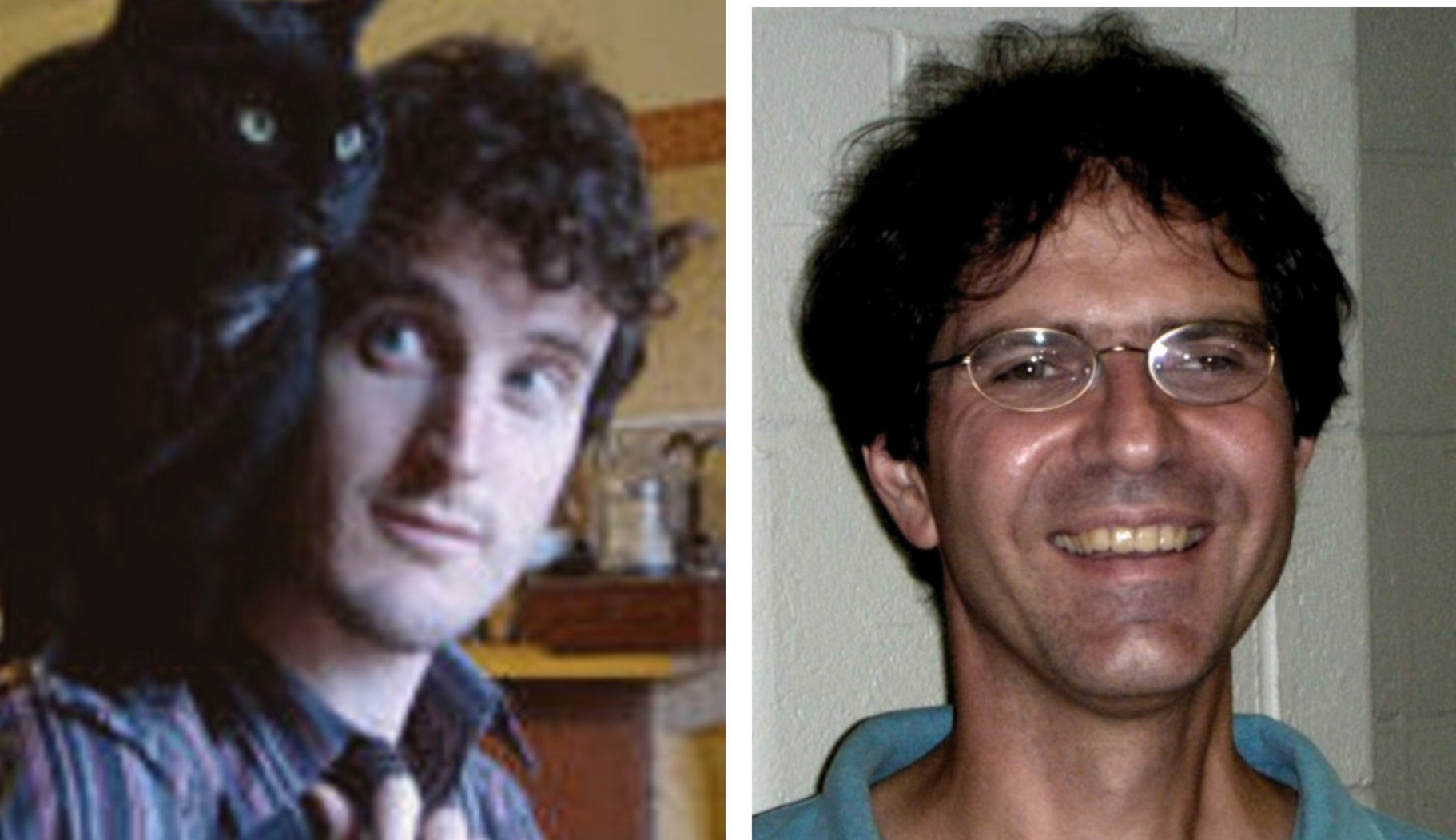
Wednesday, July 24, 2013
How The Clean-Up And The Locked Door Contribute To The Very Strong Case For Guilt
Posted by James Raper
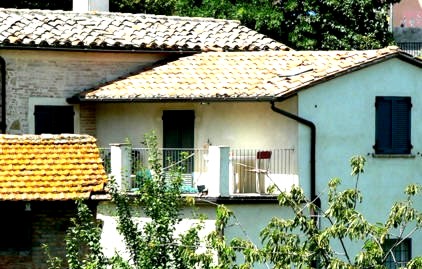
On the 30th September the appeals of Amanda Knox and Raffele Sollecito against the convictions they received at the first instance trial will resume, this time in Florence.
This follows the annulment by the Supreme Court of the acquittal verdicts rendered by the Appeal Court presided over by Judge Pratillo Hellmann. There is one conviction not under appeal. This is Knox’s conviction for calunnia, which is now definite.
They are therefore both currently convicted of murder and sexual assault, and a number of lesser charges, amongst which there is the simulation of a burglary “to ensure impunity for themselves from the felonies of murder and sexual assault, attempting to attribute the responsibility for them to persons unknown who penetrated the apartment to this end”.
There is one activity, for which there is evidence, with which they were not charged (perhaps either because it was redundant or not a criminal offence) though this was likewise to ensure impunity for themselves.
This is the partial clean up at the cottage and it is this with which I intend to deal. I want to highlight salient observations which have been under discussion here and elsewhere and some of which may be well known to readers, but perhaps some not, or have been forgotten about. Once again, in many cases, I am merely a conduit for the observations of others, not least the first instance trial judge Giancarlo Massei.
So let”˜s consider the observations and in doing so we can also throw some more light on the lone wolf theory.
1. Take a look at the bloody footprint
This is, of course, the bloody footprint on the bathmat in the small bathroom right next to Meredith’s room.
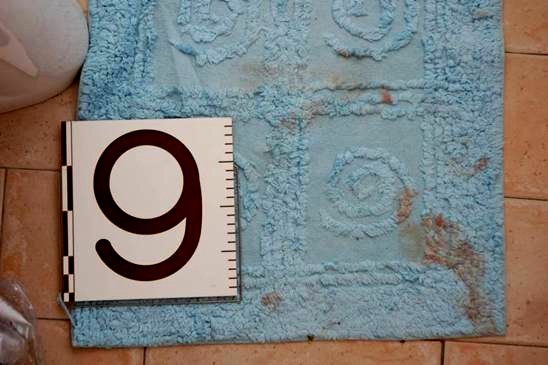
The heel of the right foot, if it had blood on it, is missing from where it should be on the tiled floor. It is difficult to imagine, given that the imprint of the foot on the mat is contiguous with the edge of the mat, that there was not at least some blood on the remainder of the foot such that there must have been at least some blood deposited on the floor.
Just as difficult to imagine that casual shuffling about on the bathmat would have removed the blood so as to render it “invisible” to the use of luminol.
Of equal relevance is that there were no connecting bloody footprints. Why not?
The defences have an improbable theory - that Guede, despite his homicidal rage, was smart enough to hop about on his left foot with a clean shoe on, and the other bare but covered in blood, and that having by this means entered the bathroom and washed his bloody right foot, disastrously leaving his (supposed) imprint there in the process, he then returned to Meredith’s bedroom inadvertently standing in blood with his left shoe and leaving with a trail of bloody left shoe prints - in which case the exercise of washing his foot was entirely in vain, on two counts, after all that careful hopping around.
Neither is it entirely clear why his right shoe came off in the first place.
It is far more probable that the inevitable bloody prints were deliberately and carefully removed. The reason for doing this was not just to conceal who would have made them (the print on the bathmat was, after all, left in situ) but, from a visual perspective, to conceal any blood that might be noticeable and alarming to anyone approaching Meredith’s room. Guede’s bloody shoeprints in the corridor were visible but only on close inspection.
2. Take a look at the bathroom door
Specifically the internal (hinge) side of the bathroom door. Take a look at this photograph.
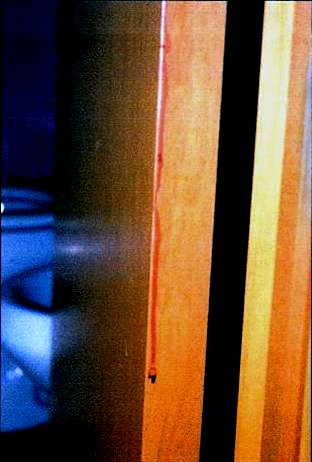
We see a long streak of dried blood. Clearly the blood has flowed some distance under the influence of gravity and we can see that it looks slightly diluted, with red corpuscles gathering towards the tip of the streak. A drip of that size does not appear from nowhere.
Indeed it is difficult to imagine how the blood got there unless it was part of a larger area of blood which most likely was on the face of the door and which was swiped to the right and over the edge of the face of the door. The cloth or towel used to do this was wet accounting for the slight dilution and length of the streak.
3. Take a look at Meredith’s door
It is interesting, is it not, that there is blood on the inside but not on the outside? The outside:
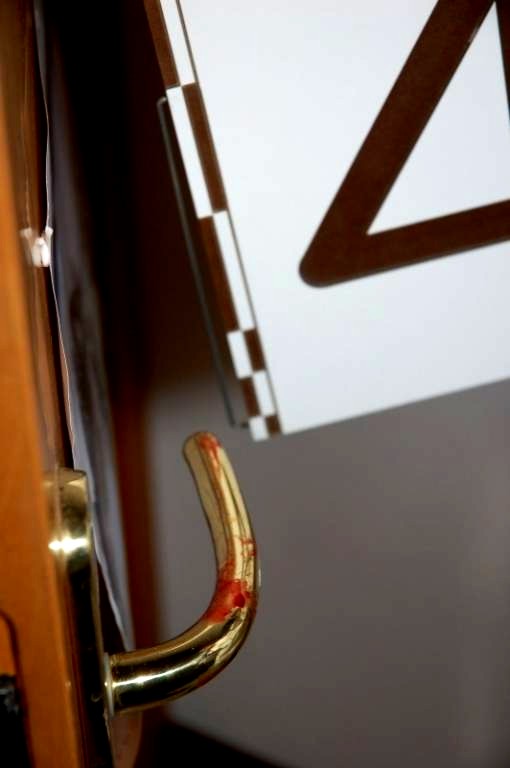
It is difficult to see how and why Guede touched the inside handle with a bloody hand (was it shut and if so, why?) and then closed the door to lock it without leaving a trace on the outside face of the door. Possibly he might have changed hands. The answer might also be that he visited the bathroom to wash his hand as well as his foot, save that none of his DNA was recovered from the spots and streaks of diluted blood in the washbasin, whereas Knox’s DNA was. All the more surprising given that Guede shed his DNA in Meredith’s room.
We see some blood on the edge of the door which again might be the remnant of a trace on the outside face.
4. Take a look at Amanda Knox’s lamp.
This was found inside Meredith’s room behind the door. Meredith also had a similar lamp which was resting on it’s base on the floor by her bedside table.
The presence and location of Knox’s lamp is obviously suspicious. Had Meredith borrowed Amanda’s lamp because her own was not working, then it would not have been in the position it was found but on or more likely knocked over and lying beside the bedside table since the violence appears to have been concentrated in that area of the room.
Had Meredith’s lamp been on the bedside table then likewise it too would most likely have been knocked over in her life and death struggle with her sole assailant (there are blood streaks on the wall just above) and it would not have ended up sitting upright on it’s base.
Both lamps were probably used to check the floor of Meredith’s room after the event and Knox’s lamp was probably sitting upright until it was knocked over by the door being forced open.
This is Meredith’s lamp by the bedside table.
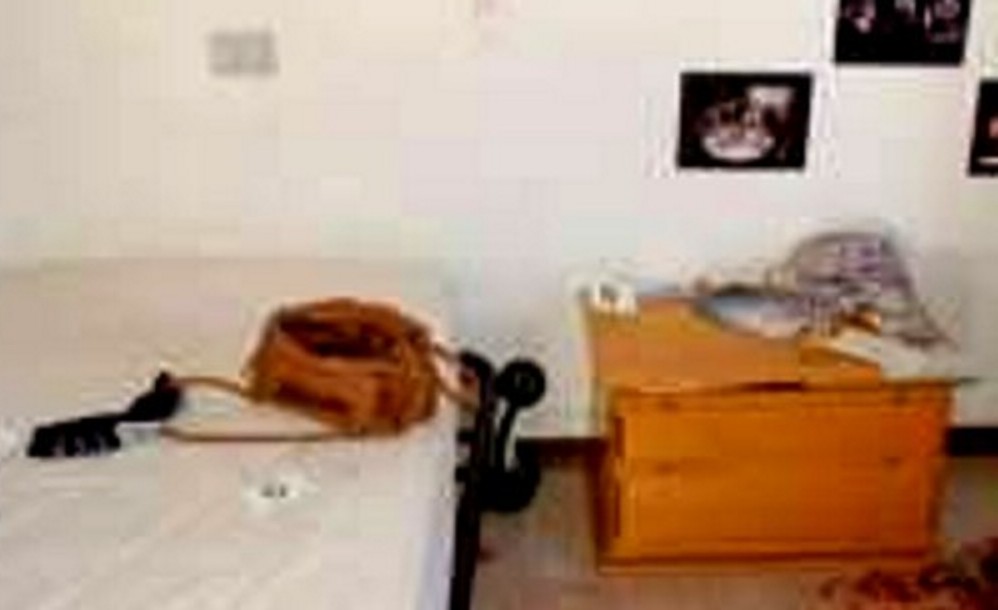
And this is Knox’s lamp by the foot of the bed.
5. Take a look at what luminol revealed
We can state with confidence that luminol (extremely sensitive to and typically used to identify blood that has been wiped or washed away) discovered :-
(a) three bare footprint attributable to Knox, one in her bedroom and two in the corridor, and
(b) two instances of the mixed DNA of Meredith and Knox, one in Filomena’s bedroom and one in the corridor.
(c) a footprint attributed to Sollecito in the corridor.
I have covered a number of elements strongly suggesting that there was at least a partial clean up, not of “invisible DNA” as the Groupies like to mock, but of what would have probably in some cases have been noticeable deposits of blood that would have attracted the eye of anyone entering the cottage and which would certainly have alarmed the observer as being difficult to explain.
Spots of and footprints in blood, not just in the bathroom but outside it, a locked bedroom door with blood on it, and a bathroom door with blood on it’s face.
We can include Knox as one such observer given her e-mail account of having allegedly stopped by the cottage to have a shower and collect some clothing before the discovery of the body. Such physical evidence - had it not been removed - would not have sat easy with that account, however dizzy and naïve Knox presents herself. One can envisage Knox thinking “sorted” - that her story would now work perfectly.
Even so, there were elements that were overlooked, such as Knox’s blood on the washbasin faucet and blood generally in the small bathroom, but a door can be closed and at least these were elements amenable to some form of explanation from her perspective, whether or not convincing, as occurred in the e-mail.
Incidentally in addition to the mixed traces in the small bathroom, Meredith’s blood was found on the light switch and a cotton bud box. I have a hard time imagining what Guede would have wanted with the cotton bud box, less so Amanda given her blood on the faucet, ear piercings and a scratch on her throat. Knox, when asked during her trial, could not recall having switched on the light during her alleged visit to the cottage.
6. Take a look at the items on Knox’s bed
Massei concluded that it was likely that it was Knox who carried out the clean up, which if correct might explain why it was not central to her thinking to dispose of the bathmat with Sollecito’s bloody footprint on it!
Knox was seen by Quintavalle at his store at 7.45 am on the 2nd November, thereby destroying her alibi. He described her as pale faced, exhausted looking, with pale blue eyes. He also added, and he would not have known this from photographs in the newspapers, that she was wearing blue jeans, a grey coat and a scarf, with a hat or cap of some sort.
We can see from the crime scene picture of Knox’s bedroom below, that such items (minus hat or cap) appear to be lying on her bed.
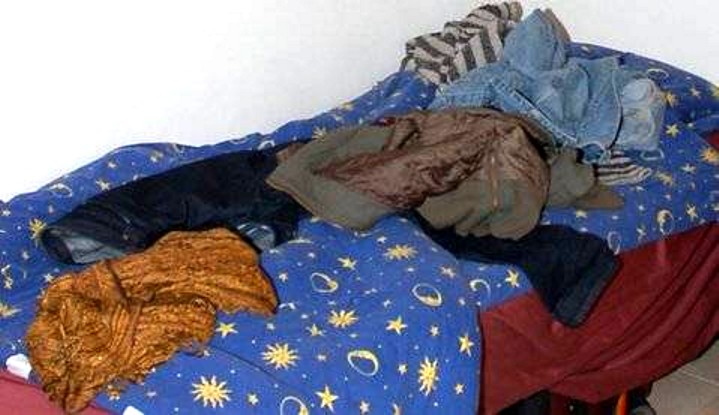
Sollecito did not accompany Knox to the store but this would be because he was known to Quintavalle whereas he was unfamiliar with her. He may however have accompanied Knox to the cottage and/or have acted as look out for her when she was there.
7. Some conclusions
I have included “The locked room” in the title because of a poster’s observation regarding Guede’s bloody left shoeprints exiting Meredith’s room. There is the simple observation that these footprints are going one way only and not towards the small bathroom. But they do not even turn to face Meredith’s door, and again hard to imagine that this could be so if it was Guede who locked her door!
We can rule out Guede as having been involved in any aspect of the clean up precisely because of that trail of footprints and other evidence of his presence left behind.
Now that the travesty of the Hellmann acquittals has been truly exposed Knox and Sollecito face an impossible uphill task.
The clean up and the locked door are just two of many elements in this case which combine together and corroborate each other in a manner that enables us to see the truth beyond a reasonable doubt.
Wednesday, July 03, 2013
Questions For Sollecito: Did Your Father & Lawyers Pre-Approve This Rant?
Posted by Our Main Posters

[Francesco Sollecito previously on Italian national TV trying to explain the weirdness of his son]
This is in response to your open letter to Italy’s TGCom website.
You are starting to sound eerily like the serial killer Ted Bundy in jubilant “catch me if you can” mode. Ted Bundy also thought he was the brightest guy on the block and the cops, prosecutors and judges were all a few bricks short of a wall.
Ted Bundy was of course caught, by smart cops, and put on trial, by smart prosecutors in front of a smart judge and jury. He made a terrible hash of his defence, he was unanimously found guilty, by a jury of smart peers, and he was made to pay his dues to society and the victims’ families - with his life.
You posted this to an audience in Italy which for the most part thoroughly dislikes you, when you are already in line for sentences that could cost you 30 years ranging up to life.
So. Did your father Francesco and your lawyers Bongiorno and Maori (and all of Knox’s people) give you the go-ahead for this seriously bizarre rant, or not?
Once upon a time, there was Amanda and Raffaele, she was an American student, studying languages and he studying Computer Science. They met at a classical concert and fell in love… no wait like that it is too boring….Lets make it more intriguing, lets see…..I know!
The prosecution found a crazy drunk, and cocaine dealer, Kokomani, after a year the story becomes: Amanda and Raffaele met in August, no one knows how or when, and one day at a bar, where Kokomani would get drunk, Amanda’s uncle came from America, no one knows why or when, and introduces the fiancees ( about to get married, I would say at this point) to the ignorant (unknown) Kokmani (who maybe thought he was going to be the best man) it’s clear. UNDERLINING that he is Amanda’s uncle and the two young people are Amanda and Raffaele (famous at the time, after all)
Mmmm…...come on it’s not the best, but at least it is more interesting, it doesn’t matter that there is no confirmation to none of this, anyway it’s a movie, OK. let’ s continue…..
Raffaele rents a house on Corso Garibaldi, a five minute walk from Via della Pergola, where Amanda lives with three roommates, Meredith, Filomena and Laura. The two pass many days together, they cuddle, have fun, they have outings to towns close to Perugia, and a couple of times they have lunch at Amanda’s house with the other flatmates. They live enthusiastic days, smiling every time they look in each others eyes….. Halloween Day, Oct. 31 2007, Amanda goes to work at Patrick Lumumba’s pub, so Raffaele works on his thesis and late that night they meet up….. to be together as always, taking care of each other.
Uff! What a pain in the ass! Give this movie a bit of adrenaline, what the hell! O.K. O.K…...one day along comes a heroin addicted serial super witness brought by the prosecution who says that he saw Amanda and Raffaele in Piazza Grimana, by a small villa a few feet from via della Pergola, discussing vividly, no one knows what and no one knows what day, but it happened at 9:00p.m. to 11:00p.m. circa. It doesn’t matter that the night between the end of Oct. and beginning of Nov. was freezing cold, it doesn’t matter that Raffaele has a house where he can do what the hell he wants, but according to the heroin addicted serial super witness, the two were under the rain for three hours (if we are talking about Nov. 1, 2007) and the cold discussing who knows what, furthermore, the heroin addicted serial super witness of murders (who’s name is Curatolo) says that when he went back to Piazza Grimana the two contentious fiancees were no longer there and he saw the buses that go to the discos boarding the kids…..it doesn’t matter that the 1st of Nov. there is not a bus in this world because the night at the disco was on the night of Halloween, Oct.31, 2007…...for the Pubblico Ministero Giuliano Mignini, Curatolo was a credible witness. Even because heroin does not produce hallucinations while cannabis does.
In reality the two fiancees passed the evening and the night at Raffaeles’s house since it was free and they had an intensive week of commitments. The 1st of Nov. in particularly Amanda had to work at Patrick’s pub, but as the evening was not busy he did not need Amanda, and after a friend of Raffaele’s passed by to cancel an appointment to go to the bus station, suddenly the two fiancees had the night free and they passed the time watching the movie “il favoloso mondo di Ameliè”, then eating fish Amanda read Harry Potter in German to Raffaele and they made love all night…...
Il Giudice di Primo Grado, Giancarlo Massei took in full the version of the heroin addicted serial super witness tramp….. Come on Giancarlo we are still not satisfied! Come on! These two fiancees are cramming our balls!! You are all of us….
According to the reconstruction of Judge Giancarlo Massei, that sentenced Amanda and Raffaele to 25 and 26 years in prison, things went this way: Amanda and Raffaele after being 3 hours in the cold under the rain, the night of the 1st of November 2007, head toward Amanda’s house in Pergola street and go right away into Amanda’s room (a room that was smaller than Raffaele’s cell when he was in prison) and start making love to bother Meredith who was reading a book in the other room…doesn’t matter that more than 5 people had car trouble and were waiting for a tow-truck, in front of the house during that time, and they give testimony that nobody passed by
Sorry, but why didn’t Amanda and Raffaele go to Raffaele’s house that was free and nobody would have been bothered?.. . Come-on! Why do you have to take into consideration this useless details, show us some firecrackers! Go Giancarlo!
Judge Massei continues: sometime during the evening, while the two were having sex in Amanda’s room, suddenly somebody knocked at the door… Amanda and gets up and gets dressed goes to the door and who does she see? ...Rudy Guede, a colored guy that didn’t know anybody except the guys of the lower floor and had met Amanda and Meredith one time but never in his life had he met Raffaele,. that urgently needed to take a shit.
But what?! What kind of plot is this? Where in the hell do you see that people go around knocking on doors because they need to take a shit?... Come on Giancarlo do not disappoint us! But judge Massei does not disappoint us…. Meanwhile Amanda opens the door to the poor black, victim of bewitched charm for Amanda, and goes inside to go to take a shit…. and Amanda as if nothing happen, goes back in the room and gets undressed again…
But why couldn’t Meredith go open the door while she was reading a book?..Oh, right! Otherwise Amanda loose the part of the main actress, sorry, you are right!
Practically , according to Judge Giancarlo Massei’s reconstruction the story goes on like this : while Amanda and Raffaele went back to have sex, Rudy Guede comes out of the bathroom, after listening to some songs on his ipod, he is overwhelmed by the SEXUAL VIBRATIONS that Amanda and Raffaele were relishing in the house hallway and the house room….
WTF Giancarlo, this is tough shit! Not even Dario Argento could come up with something like that…. “SEXUAL VIBRATIONS”....WTF you are a genius!! Give me five!...but the good part has still to come: when Guedé smells the SEXUAL VIBRATIONS, all of a sudden he is possessed and decides by all means that he has to have sexual intercourse with Meredith.. and ventures in her room and, being rejected, because poor soul he is ugly, Raffaele and Amanda get into the action and at that point dont help Meredith who is their friend, but, to the contrary and unexpectedly, they help Rudy Guede to rape Meredith and than finish her up cutting her throat…
All three had knives: Rudy has a past as thief, he used to burglarize offices and apartments with the same “modus operandi” that he used to get in in via della Pergola, moreover he has been captured while sleeping in a kindergarten in Milano with a knife in his bag. Raffaele had always a little collector knife in his pocket: never mind that he never used it to hurt anybody in his life, there are no traces of anybody else on his little knife “¦.Amanda… and Amanda? Judge Massei says that she used an enormous kitchen knife got from the “looser” Raffaele’s house and put it in her purse…. why?? because…YOU NEVER KNOW (a 15 cm knife can be always useful “¦).. Massei says.
But the poor Meredith was a small build girl, her wounds are not that big and that knife would have gone through the neck because of how big it is… there isn’t blood on that knife nor Meredith’s DNA because the analysis of the scientific police are completely unreliable , not having being compelled to observe the international protocols. There are no bleach traces. What the police says are hypothesis never proved .
Come on, details! But there are no traces of Amanda and Raffaele on the crime scene, there are only Guede’s, everywhere. How it is possible that they were cleaned, were are the traces of the cleaning??! Come on do not break our nuts! This is just details, let me see this movie!
What about that little bra hook? There are 5 different profiles…all on the iron part of the hook, nothing on the tissue: it has been found 46 days after the “polizia scientifica” swept the crime scene, and meanwhile even the police swept the scene with no anti-contamination precautions and put upside down the all apartment. There isn’t Raffaele profile on that hook: if that mix of traces is properly read you can find anybody’s DNA
Do you want to stop with these bothersome things?!! Lets finish to see this movie!! Massei concludes: we don’t know why Amanda and Raffaele choose to kill Meredith, but we have to accept their choice. THE EVIL CHOICE. Probably under the influence, because they didn’t despise her, taking into account that they said that they smoked a joint… unfortunately nobody tested to check if Amanda and Raffaele used heavy drugs or were in the habit of binge drinking. WTF! Great job! You weld The Exorcist and Lethal Weapon!! Giancarlo you are my idol!!!!

